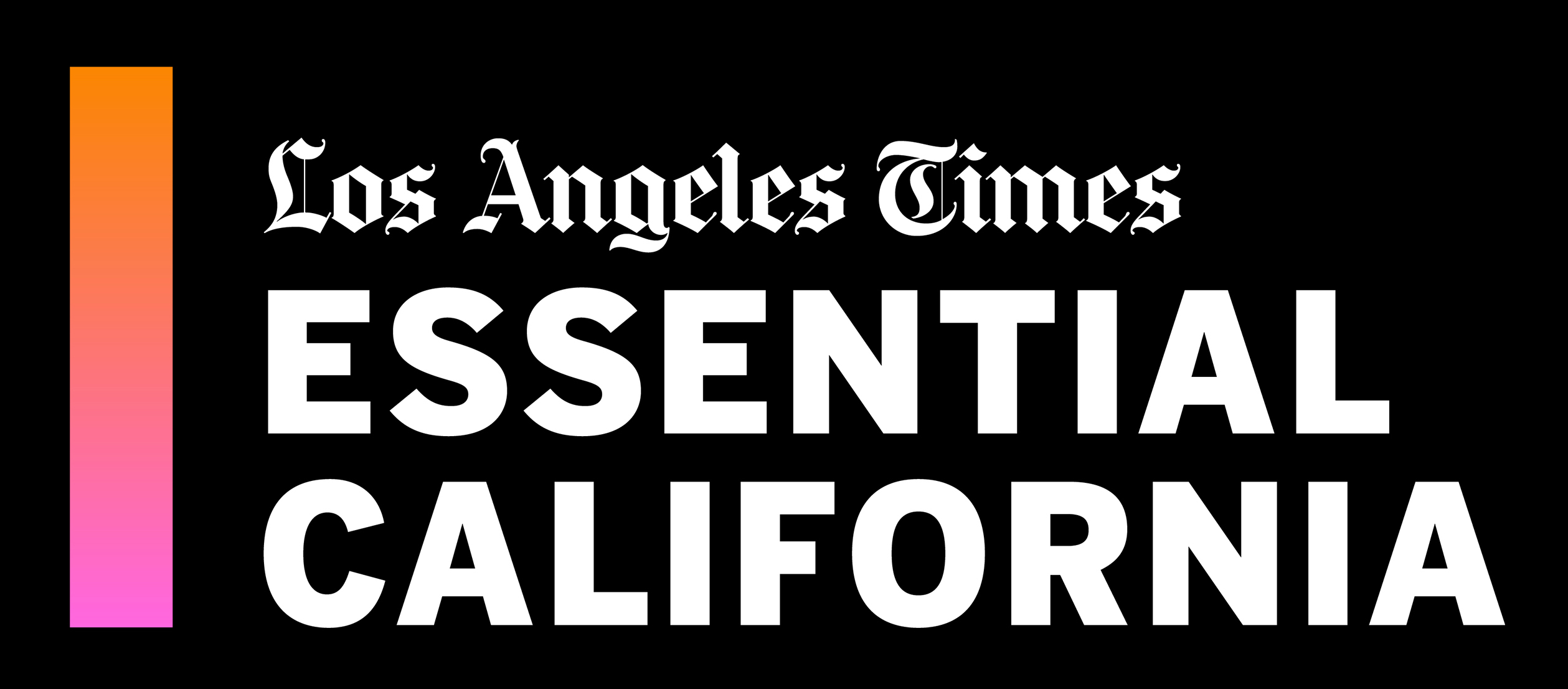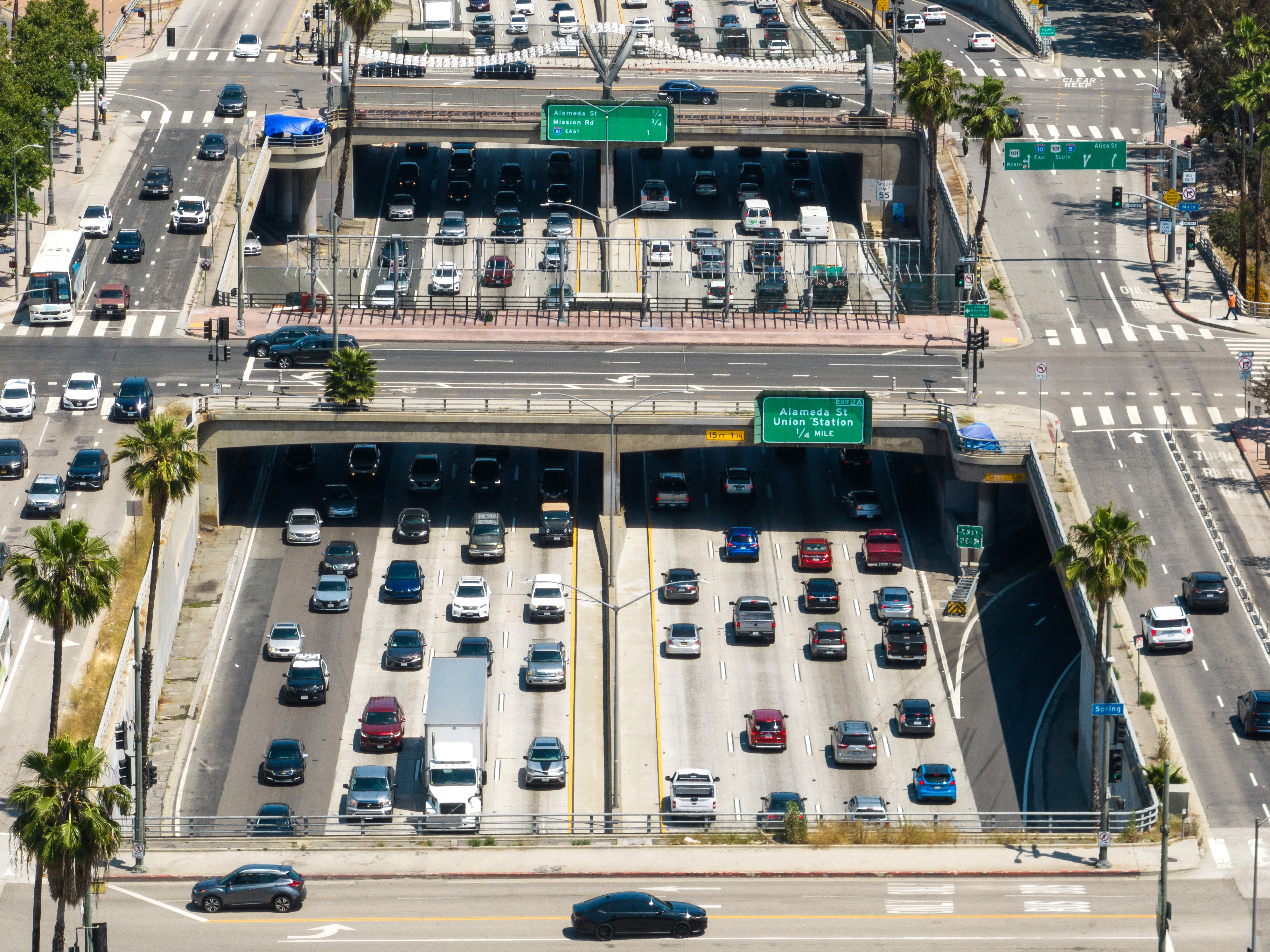 |
| ||
 Traffic on the 101 Freeway in downtown Los Angeles. (Myung J. Chun/Los Angeles Times) Traffic on the 101 Freeway in downtown Los Angeles. (Myung J. Chun/Los Angeles Times) |
By Terry Castleman Good morning. It’s Wednesday, Dec. 20. I’m Terry Castleman, a data reporter for The Times. Here’s what you need to know to start your day.
California’s sprawl means unequal commutesIt’s one of our readers’ favorite topics: the exodus of people from a state that has known nothing but growth in its storied history. Over the last year, I took a long look at the many factors contributing to a so-called California exodus, and spoke to dozens of former Californians who chose to relocate. They told a consistent story, describing an inverse of the Gold Rush that brought so many to California. As the state has grown less affordable, opportunity draws some people to other frontiers. My colleagues and I have written a number of stories about the states on the receiving end of the exodus:
Not everyone who is challenged by California’s cost of living leaves, and those who stay face a housing crisis. Specifically, they are made to endure punishing commutes as the job centers of Southern California become less affordable and population growth occurs in the suburbs and exurbs, as I report in my latest story. Those job centers, like Orange County and Los Angeles’ Westside, are far from the exurbs of Riverside or San Bernardino counties where housing growth is higher and prices are lower. This directly relates to a phenomenon I have dubbed the cross-county commute. In writing about the state of commutes in SoCal, I found that about 750,000 people commuted across county lines in 2020. The number has steadily increased over decades, largely driven by those who live in counties such as San Bernardino and Riverside and commute to Orange and Los Angeles. From 2016 to 2020, census data show that there were 60,000 more commuters driving from Riverside County to Orange County each day than those going in the opposite direction. The full breakdowns by county are mapped out in the story. The distance between home and work is essentially a tax imposed on working-class people. As an expert explained to me, low-wage jobs are highly transferable by location and high-wage jobs are more likely to allow for remote work, leaving those in the middle with longer commutes. In fact, data from the 2022 census show that the median annual earnings of Californians who worked primarily from home was almost $80,000, compared with just under $50,000 for those who drove alone to work. Within Los Angeles, similar class dynamics are at play when it comes to commute time. My analysis found that residents of the San Fernando Valley and South L.A. see the longest average commute times. An expert explained that the sprawling Valley and South L.A. both have inferior public transit options compared with other parts of the city, and each place is far from local job centers. In reviewing the data and speaking to experts, a number of surprising trends popped out to me (and my editors). For example, the pandemic thinned out traffic, but not in the way I expected. And for all the hand-wringing — some on my part — about California losing people, traffic has persisted. Some people I spoke to went so far as to hope more people would leave, taking their cars with them. Ultimately, most experts I’ve spoken to believe that public transit is the only remedy for the region’s infamous congestion. Those fixes will take years if not decades; for now, working-class Californians bear the brunt of sprawl-induced supercommutes. Today’s top stories (Jim Cooke/Los Angeles Times; Photo via Getty Images) Business
War in the Middle East
Crime and policing
More big stories
Get unlimited access to the Los Angeles Times. Subscribe here. Commentary and opinions
Today’s great reads (Marcus Yam / Los Angeles Times) Mexico’s fliers: An ancient tradition from 100 feet up. Across Mexico, hundreds of people take to the skies, spiraling gently to earth and preserving an Indigenous tradition that survived the Spanish conquistadors perhaps simply because it is jaw-dropping. Other great reads
How can we make this newsletter more useful? Send comments to essentialcalifornia@latimes.com. For your downtime Enjoy a Christmas Eve dinner spread with port wine-braised short rib, black truffle mashed potatoes and cheesecake with tequila caramel. (Jessie Cohen) Going out
Staying in
And finally ... a great photoShow us your favorite place in California! Send us photos you have taken of spots in California that are special — natural or human-made — and tell us why they’re important to you.  Soraya Yousefi is photographed with some of her ceramic clown-themed cups and bowls at her studio in Northridge. (Mel Melcon / Los Angeles Times) Today’s great photo is from Times photographer Mel Melcon. Pictured is Northridge-based artist Soraya Yousefi who gained a devout following on social media by making colorful ceramics that look like clown faces after struggling to get hired. Have a great day, from the Essential California team Terry Castleman, data reporter | ||||||||||
No comments:
Post a Comment